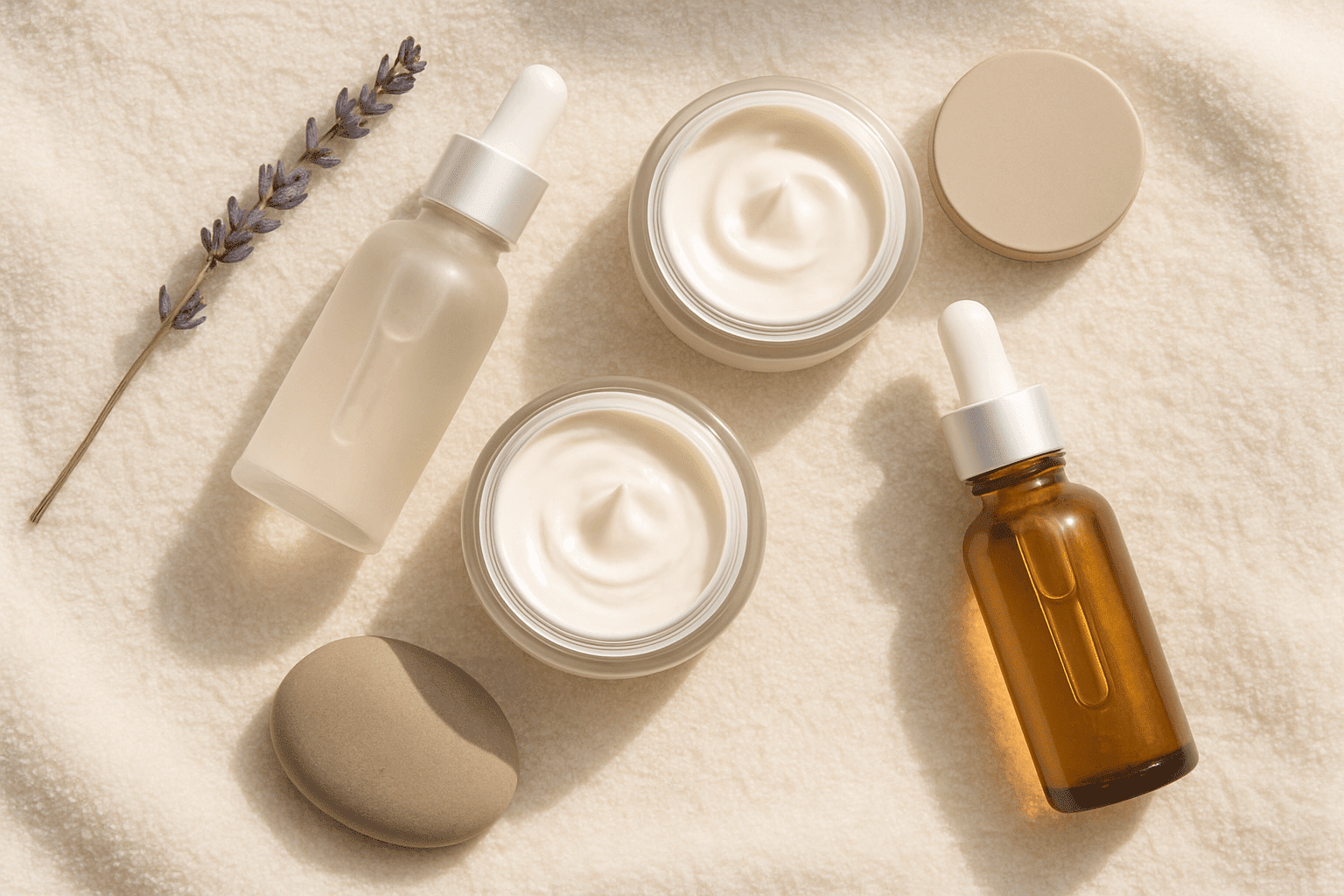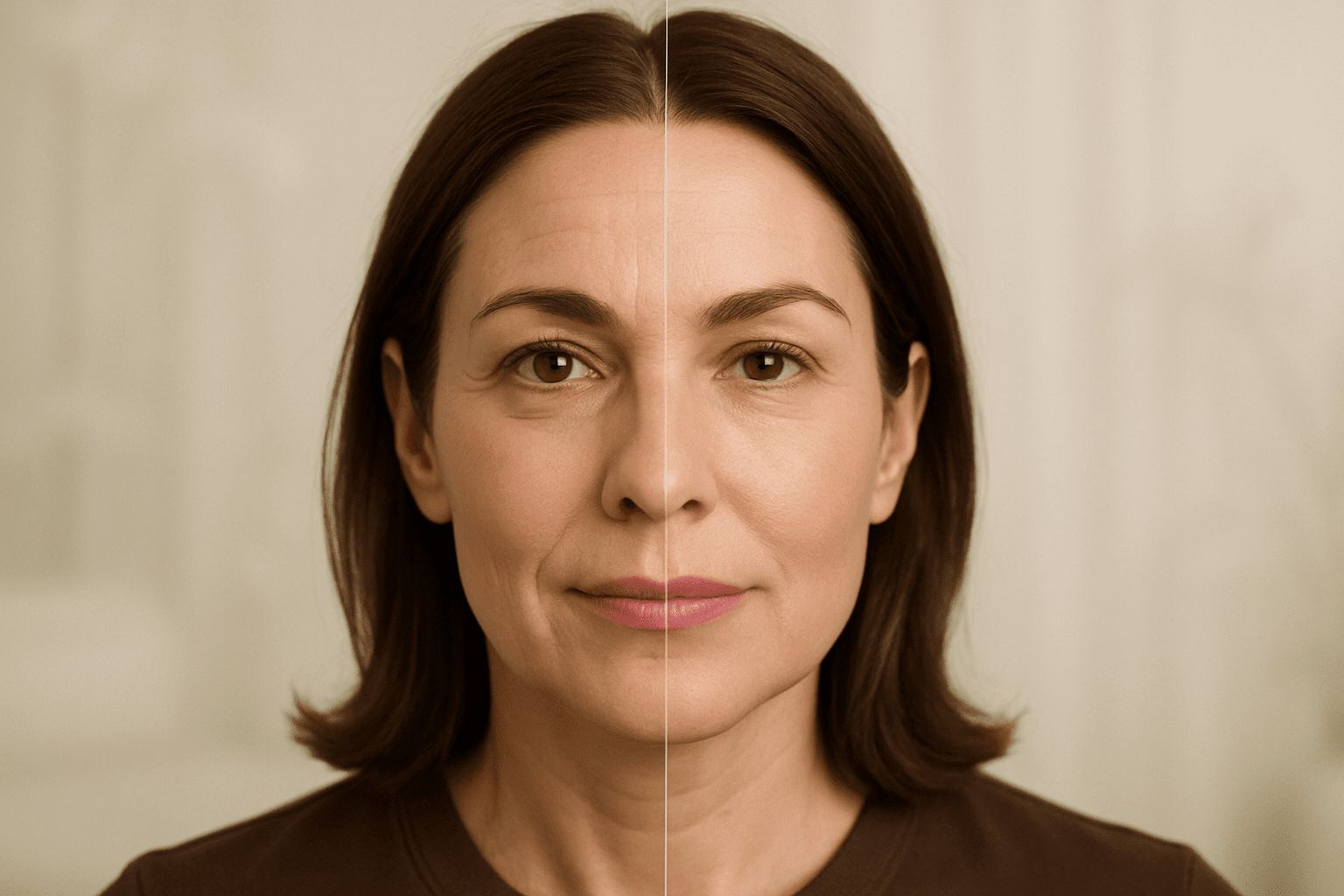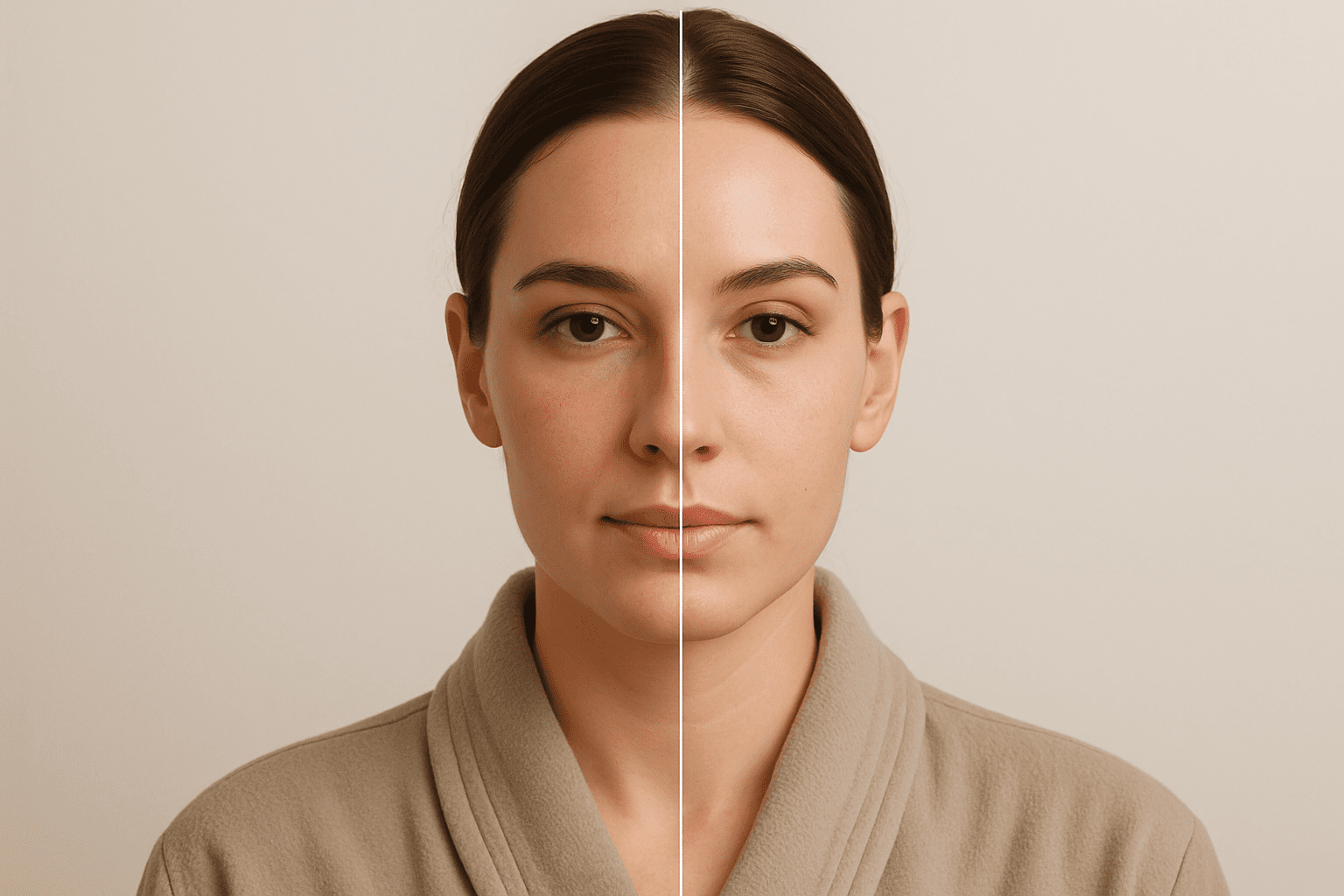Introduction
If you’re on a mission to tighten, smooth, and firm your skin—without surgery—collagen stimulation is your new best friend. From PDO threads to microneedling, today’s top aesthetic treatments don’t just mask aging—they rebuild your skin’s internal scaffolding. In this blog, we’ll dive into the science behind collagen stimulation and explore why these treatments work, how they differ, and what to expect when choosing one over the other.
Jump To:
TLDR – Quick Guide
What is Collagen?
It’s the structural protein that keeps your skin plump, elastic, and youthful.
What causes collagen loss?
Aging, UV exposure, stress, and environmental damage break down collagen over time.
How can you rebuild it?
Treatments like PDO threads and microneedling trigger the body’s natural healing response, prompting new collagen production.
What results can you expect?
Smoother texture, fewer wrinkles, firmer skin, and improved elasticity.
Is it safe?
Yes—when performed by trained professionals at a trusted clinic like My Skintastic.
Detailed Breakdown
What Exactly Is Collagen, and Why Do We Lose It?
Collagen is a protein that acts as the “glue” holding your skin together. It gives skin its firmness, bounce, and youthful texture. Unfortunately, collagen production begins to decline as early as your mid-20s, leading to wrinkles, sagging, and dullness.
Factors that accelerate collagen breakdown include:
- Sun exposure
- Smoking or high sugar intake
- Stress and inflammation
- Lack of sleep or hydration
By the time you hit your 40s, your collagen levels can drop by 25% or more. That’s where stimulation treatments come in.
How PDO Threads Stimulate Collagen
PDO (polydioxanone) threads are biocompatible sutures placed under the skin to create an immediate lifting effect. But their real power lies in what happens afterward.
Here’s the science:
- The body treats each thread as a micro-injury, which triggers fibroblast activity.
- Fibroblasts are the cells responsible for collagen and elastin production.
- As the threads dissolve over 6–9 months, collagen continues to build in the treated area—offering long-lasting skin support and volume.
Best suited for: Jawline definition, sagging cheeks, neck tightening, and brow lifts.
How Microneedling Promotes Collagen Growth
Microneedling uses tiny sterile needles to create controlled micro-punctures in the skin. This kickstarts a healing cascade that stimulates collagen and elastin production without removing the top layer of skin.
What happens post-treatment:
- Inflammation leads to cell signaling that increases collagen synthesis.
- Platelets release growth factors that trigger skin regeneration.
- Over the next few weeks, skin becomes plumper, smoother, and firmer.
Enhancements: Adding PRP (platelet-rich plasma) or serums during treatment can amplify results by delivering healing factors deep into the dermis.
Best suited for: Fine lines, acne scars, enlarged pores, stretch marks, and overall skin texture.
Comparing PDO Threads vs. Microneedling
| Feature | PDO Threads | Microneedling |
| Mechanism | Lifts tissue & stimulates collagen via sutures | Creates micro-injuries to trigger collagen |
| Downtime | 24–72 hours | 24–48 hours |
| Pain Level | Mild to moderate | Mild |
| Ideal For | Lifting and contouring | Texture, pores, scars, and wrinkles |
| Results | Visible immediately and improve for 3–6 months | Gradual over 4–6 weeks, peaking at 3 months |
| Longevity | 12–18 months | 6–12 months |
Why These Treatments Work So Well Together
For some clients, combining microneedling and PDO threads offers the best of both worlds: deep lifting and surface smoothing. Microneedling enhances skin texture while PDO threads lift and stimulate volume where it’s most needed. At My Skintastic, expert providers tailor these treatments based on your unique skin concerns, creating custom treatment plans for long-term transformation.
Key Takeaways
- Collagen is your skin’s support system—and it naturally declines with age.
- PDO threads and microneedling are science-backed ways to stimulate collagen production without surgery.
- PDO threads work below the surface to lift and regenerate; microneedling works above to smooth and refresh.
- Each treatment offers unique benefits and can be combined for powerful, layered results.
- For best results, work with a skilled provider who understands how to balance technique, timing, and treatment depth.
FAQs
1. How soon will I see results from collagen-stimulating treatments?
PDO threads deliver some immediate lift, but collagen-building effects become more noticeable within 4–6 weeks. Microneedling results typically appear within 2–4 weeks, with continued improvement over several months. Patience pays off, as collagen takes time to fully develop.
2. Are these treatments safe for all skin types?
Microneedling is generally safe for all skin tones. PDO threads are safe but require a skilled provider to ensure proper placement and avoid asymmetry. A consultation helps determine the best approach based on your skin tone and goals.
3. Can I combine both treatments in one visit?
Not typically. Since both stimulate a healing response, they’re usually spaced a few weeks apart to avoid overwhelming the skin. However, they can be strategically combined over a treatment plan for maximum benefit.
4. How long do the results last?
PDO thread results can last up to 18 months, while microneedling effects last 6–12 months depending on skincare and lifestyle. Maintenance sessions are recommended once or twice a year for ongoing benefits.
5. What should I avoid after treatment?
Avoid sun exposure, exfoliation, and harsh skincare for at least a week post-treatment. Use only the aftercare products provided by your provider. Always wear SPF to protect your new collagen and avoid pigmentation issues.



